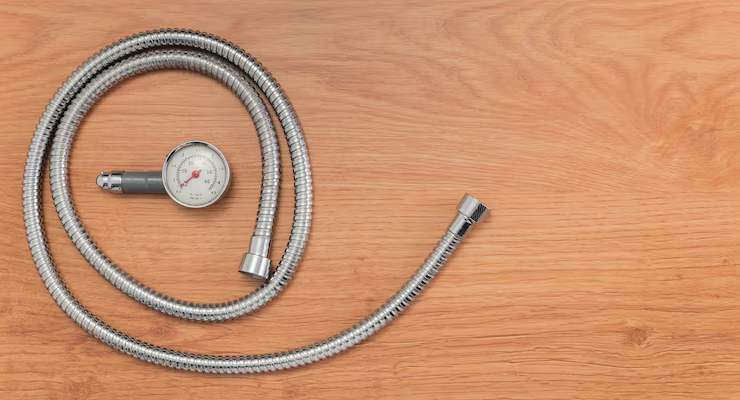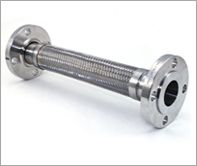The industrial world runs on precision where every component serves a specific purpose within complex systems. Substituting one part for another rarely ends well, particularly in high-temperature applications across manufacturing facilities. Hoses exemplify this principle perfectly across diverse industrial operations where material selection determines success. Most operators assume any flexible hose can handle fluid transfer tasks without considering consequences.
Steam Applications Demand Specialised Solutions
Steam hose systems face brutal operating conditions that general hoses cannot survive under any circumstances whatsoever. Steam temperatures routinely exceed 200°C whilst pressures reach 20 bar or higher in typical industrial applications. Regular rubber compounds deteriorate rapidly under these extreme thermal conditions that exceed design limitations. The internal construction differs dramatically between standard hoses and specialised steam variants across all applications.
Understanding Material Science Behind Performance
Eaton hoses demonstrate advanced engineering principles through their sophisticated multi-layer construction methods for demanding industrial applications. Each layer serves specific functions under extreme operating conditions that would destroy conventional alternatives completely. The tube material must resist steam permeation whilst maintaining complete chemical compatibility with superheated vapour. Reinforcement layers determine pressure ratings and overall service life expectations across diverse operating environments.
Temperature Ratings Tell the Complete Story
General-purpose hoses typically handle temperatures up to 80°C in most standard industrial applications effectively. Steam hoses operate safely at 220°C or higher without material degradation or performance loss. This difference represents fundamental material engineering rather than simple temperature tolerance across operating ranges. Thermal cycling creates enormous stress on hose assemblies during repeated startup and shutdown operations.
Steam exposure creates unique challenges that regular hoses cannot withstand over extended periods. The molecular structure of standard rubber compounds breaks down when exposed to superheated steam. This degradation occurs at the molecular level, causing irreversible damage to hose integrity. Temperature spikes during system operation accelerate this deterioration process significantly.
Pressure Capabilities Define Safety Margins
Working pressure specifications reveal another critical difference between hose types in industrial applications. Standard industrial hoses handle 10-15 bar in most typical applications without structural failure. Steam systems routinely operate at much higher pressures with significant safety factors required. Steam hose construction includes multiple reinforcement plies to achieve burst pressures exceeding 80 bar.
Pressure testing protocols differ significantly between standard and steam-rated hose assemblies during manufacturing. Steam hoses undergo rigorous testing at pressures far exceeding normal operating conditions. This testing validates performance under extreme conditions that would destroy regular hoses. Quality control measures ensure consistent performance across production batches.
Installation Requirements Vary Significantly
Steam hose installations require specialised fittings and connection methods that differ from standard applications significantly. Standard crimped fittings may not provide adequate sealing under extreme temperature conditions over time. Steam-rated couplings use different gasket materials and enhanced clamping systems for reliable sealing. Proper support and routing become critical with steam hoses due to thermal expansion.
Expansion loops and flexible mounting systems accommodate thermal growth during heating cycles effectively. Steam hoses expand significantly when heated, creating stress on connection points and supports. Rigid mounting systems fail when thermal expansion exceeds design limitations. Professional installation techniques prevent premature failure from improper mounting methods.
Cost Analysis Reveals Hidden Economics
Steam hoses cost more initially than general-purpose alternatives in most purchasing scenarios across industries. This price difference often drives poor purchasing decisions in cost-sensitive industrial environments unfortunately. Yet the total cost picture tells a completely different story when lifecycle costs are considered. Regular hoses fail quickly in steam service, creating frequent replacement costs and downtime.
Emergency repairs during production shutdowns multiply these expenses dramatically through lost production revenue. Steam hoses provide years of reliable service under proper operating conditions. Maintenance costs decrease significantly with proper hose selection and installation practices. Total cost of ownership favours steam-rated components in high-temperature applications consistently.
Safety Implications Cannot Be Ignored
Using inappropriate hoses in steam applications creates serious safety risks for personnel across facilities. Hot steam under pressure causes severe burns and injuries when hoses fail unexpectedly. These incidents result in workers’ compensation claims and increased regulatory scrutiny from authorities. Steam hose failures often occur without any warning signs or symptoms visible externally.
Emergency response procedures must account for steam hose failures in high-risk areas. Personnel training becomes critical when working around steam systems with potential failure points. Proper safety equipment and procedures reduce injury risk when failures occur. Regular inspection programmes identify potential problems before catastrophic failures occur.
Application-Specific Selection Criteria
Different steam applications require specific hose characteristics that match operational requirements precisely across industries. Food processing demands FDA-approved materials whilst chemical plants need enhanced corrosion resistance properties. One steam hose design cannot serve all applications effectively across diverse industrial sectors. Working pressure, temperature, and media compatibility guide proper selection processes through technical evaluation.
Steam quality varies significantly across applications, affecting hose material requirements and performance expectations. Wet steam contains water droplets that create different wear patterns than dry steam. Chemical additives in steam systems require compatible hose materials to prevent degradation. Professional evaluation ensures optimal material selection for specific operating conditions.
Long-Term Performance Considerations
Steam hose performance degrades gradually over time through repeated thermal cycling and pressure fluctuations. Regular inspection schedules identify wear patterns before failure occurs in critical applications. Replacement intervals depend on operating conditions, installation quality, and maintenance practices. Predictive maintenance programmes extend service life whilst maintaining safety margins.
Performance monitoring systems track hose condition through temperature and pressure measurements during operation. Data analysis identifies trends that indicate approaching replacement needs. Proactive replacement prevents unexpected failures and associated safety risks. Documentation supports warranty claims and performance analysis across facilities.
The differences between steam hoses and regular hoses extend far beyond simple temperature ratings significantly. Material science, construction methods, and safety requirements create distinct product categories that cannot be interchanged safely. Proper hose selection protects personnel, equipment, and production schedules from catastrophic failures effectively. Steam applications demand steam-rated solutions for reliable, safe operation across all industrial facilities consistently. Contact industrial hose specialists to evaluate your steam system requirements and ensure proper component selection for your facility’s specific operational needs.
Featured Image Source: https://img.freepik.com/free-photo/flat-lay-composition-tools_23-2148138069.jpg






